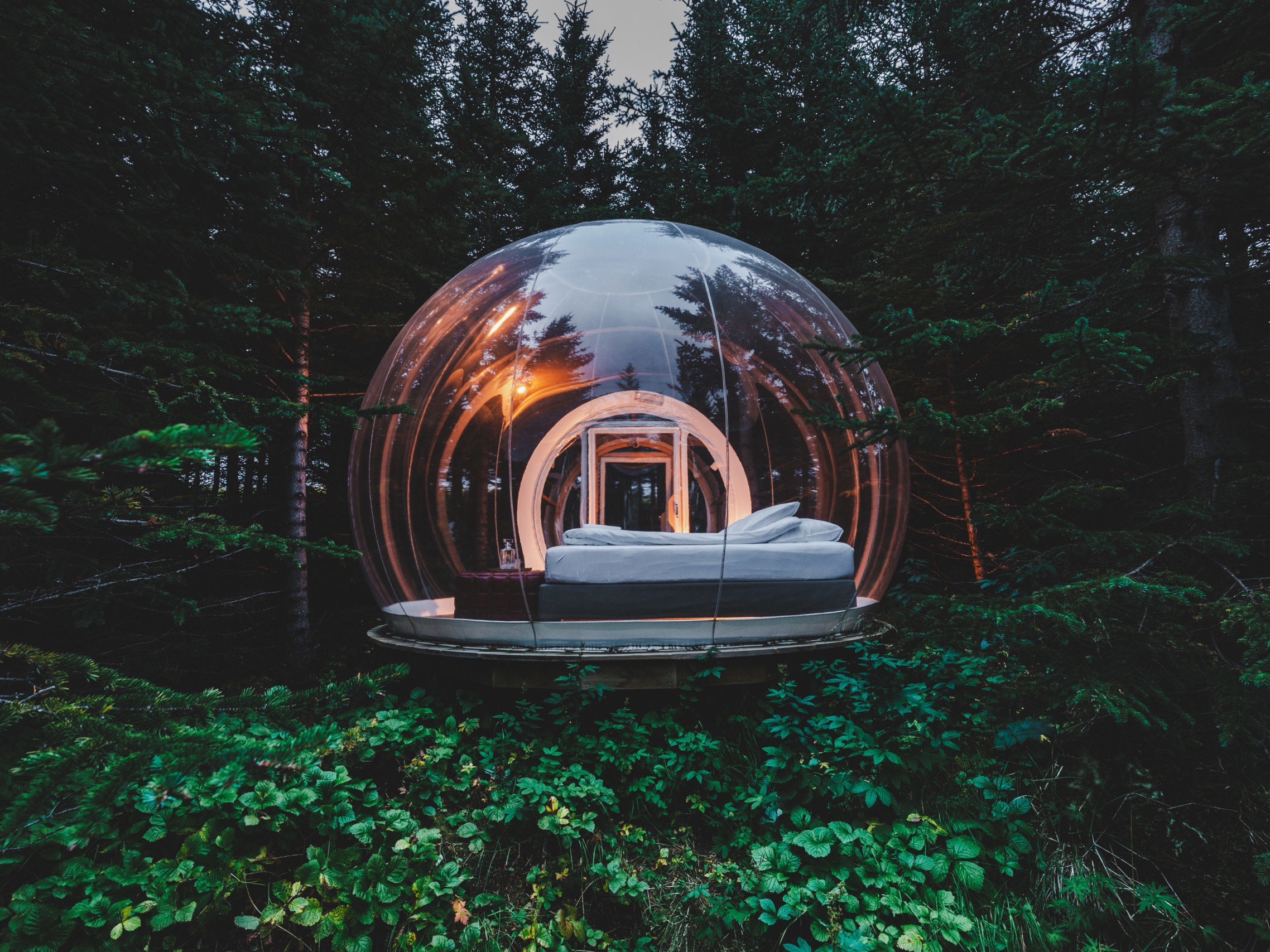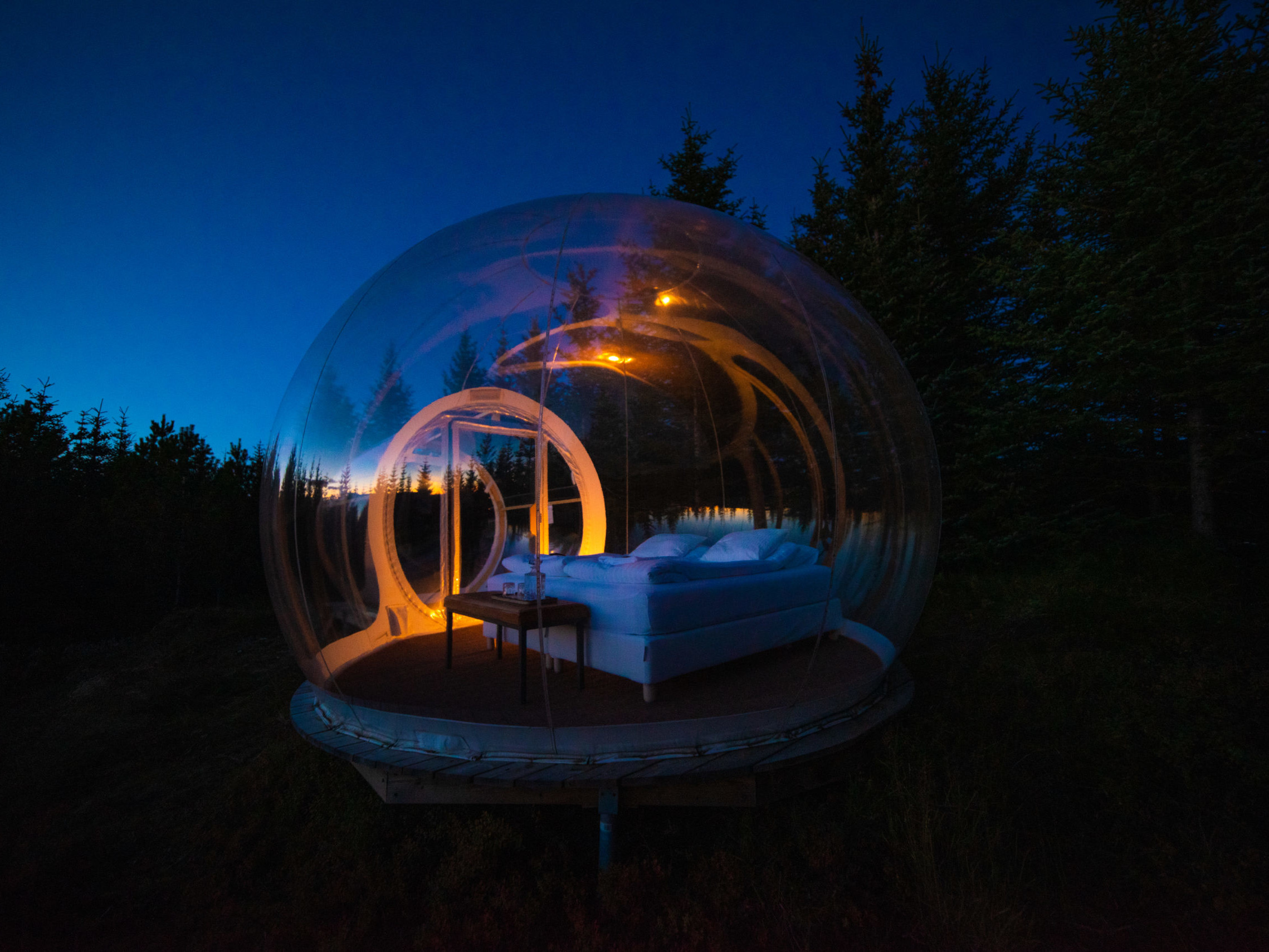Iceland’s Pioneering Fish Skin Treatment For Human Wounds
Iceland’s Pioneering Fish Skin Treatment For Human Wounds
Text by Sonia Nicolson
These FDA-approved skin substitute reduces a patients inflammation and can transform chronic wounds into acute injuries using a simple solution; fish skins.
Amputations can be the result of trauma or an aggressive disease but a lot are caused by injuries that fail to heal; chronic wounds. This can be the result of the patient having diabetes. Diabetes is on the rise with 1 in 11 Americans suffering, and this is set to rise to 1:4 by 2050. Iceland has an exceedingly low rate of diabetes for a developed country. Genetic factors, and a higher percentage of A2 milk consumption (A2 beta-casein is the dominant form of casein protein found in a cows milk) are possible explanations for this low rate. Diabetes is when a person has high blood sugar levels and this can cause nerve damage and poor circulation meaning the body finds it harder to heal wounds. If wounds become infected, this can lead to amputation.
Current Treatment For Wounds
Wounds are currently treated with skin from animals; pigs (or human cadaver, corpuses) but both can risk infections or transfer of other diseases.
“I was interested in finding a source of material that is as similar to human skin as possible and the surprising thing is that cod fish skin is much more similar to human skin than for example pig skin” said Fertram Sigurjonsson, Chemist and CEO, Founder of Kerecis Ltd.
Gone Fishing
Iceland has worked with fish leather for a long time. “My grandfather’s first shoes were the skin of a catfish,” Sigurjonsson says, and instead of kilometers, Icelanders used old worn out fish shoes to mark distance.
“My first memories are of fish,” Sigurjonsson says, poking at a machine he designed to help dry out the skin. Like many men here in Iceland he spent his summers working in processing plants, cleaning the catch or driving forklifts. After graduating from the Technical University of Denmark with a Degree in Innovation and Product Management, he started working at prosthetics maker Ossur, where he saw many amputee patients with replacement limbs developing chronic wounds. An impromptu move to New Zealand where he was running business development for Keratech, who dressed wounds with sheep wool, got him thinking about substitute natural materials. When he returned to Iceland, he started researching the idea of using fish skins in wound dressing.
Fertram Sigurjonsson has spent his career treating chronic wounds and is turning cod skins into medical products. The Kerecis Ltd manufacturing facility, located in the fishing town of Isafjord which is 30 miles from the polar circle, mainly fishes for cod. Using a 583-ton trawler on a 3 day fishing trip as an example “If you take all the skins from that trawler…we would be able to treat one in five wounds in the world.” says Fertram Sigurjonsson
Today, trucks haul the fish to a commercial processing facility in Isafjordur. The fish land on a conveyor belt, where they get filleted and skinned. The meat is sold as food and, twice a week, Kerecis employees come to collect skins of the right size, age, and species.
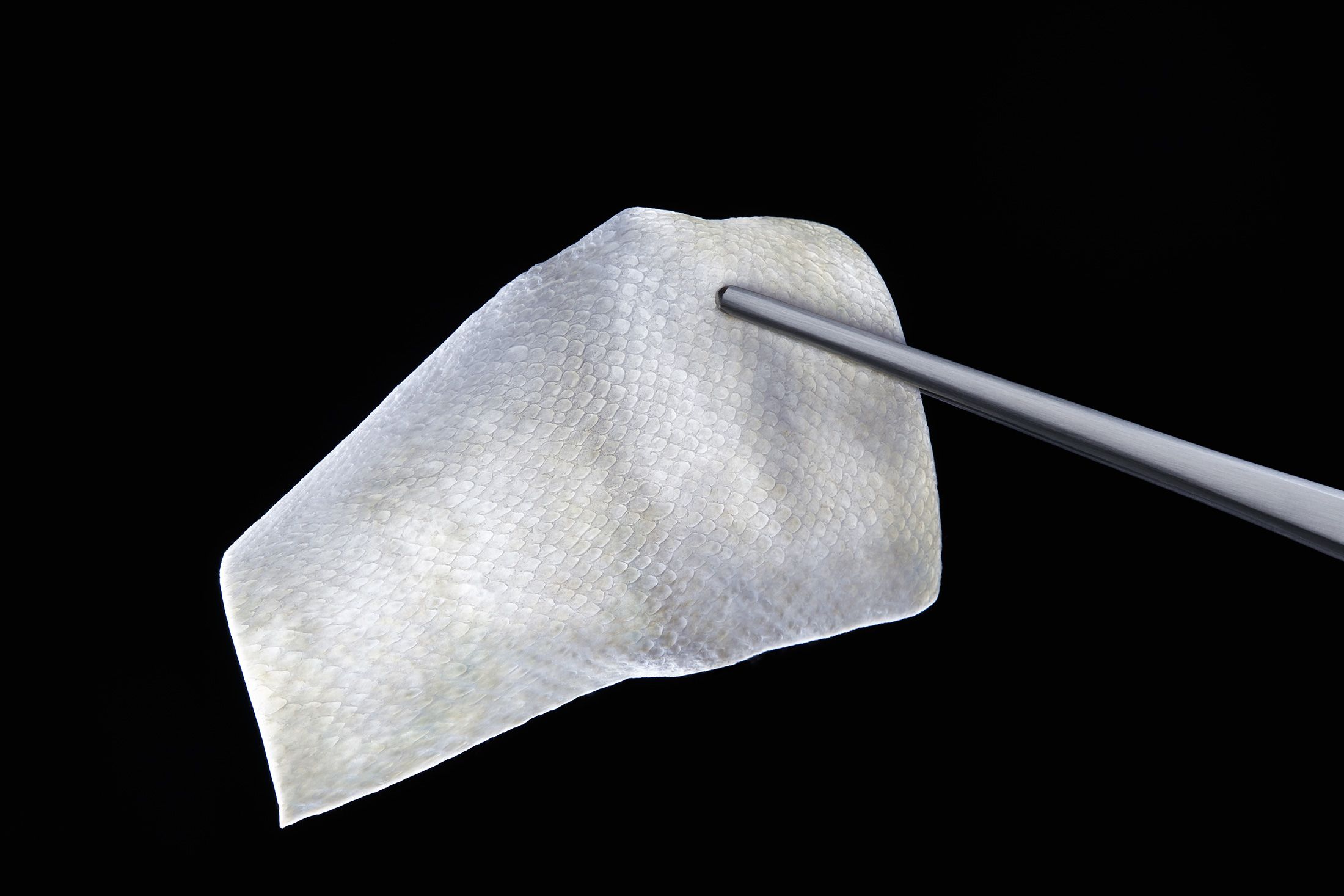
Photo by Rebecca Scheinberg
Descaling And Cleansing
The cod is taken to a processing plant where Kerecis collect the skins and examine them for flaws such as holes, tears, traces of blood and parasites. When the best fish skins are collected, the team start the process of transforming them into medical grafts.
The first step is to remove the scales from the material. The skins are then put into a solution which gently removes cells. “You need to get the mucus away, but we didn’t want to use harsh chemicals or wash away the fats or elastin,” Sigurjonsson says, referring to the protein that makes skin flexible. The clean skins are then moved into a decontaminated room where a dehydrator begins the two day process of dehydrating them, whilst preserving the important 3D structural built up of the material. This structural build up is vital to the healing process. The skin is then cut into squares and sterilised for use in bandaging.
Testing The Skins
Dr John Lantis, the Chief of Vascular and Endovascular surgery, and a Kerecis adviser, has been using Kerecis products at the Mount Sinai Hospital in New York on his patients.
The cell structure of these Kerecis fish skins recruit the patents bodies own cells to form healthy tissue. The fish skin acts as a structure around which healthy cells can grow and gradually incorporate into the closing wound. It is not known why fish skin works so well but when comparing the use pig skin verses fish skin, the fish skin grafts close the patents wounds significantly faster.
The materials in fish skin yield natural anti-inflammatory effects, especially omega-3 fatty acids, that speed up healing. When placed on wounds, the fish grafts work as an extracellular matrix; a group of proteins and starches that plays a crucial role in a patients recovery. In a healthy person, a matrix surrounds cells and binds them to tissue which generated the growth of new epidermis. But this natural structure fails to form in chronic wounds. Much like a garden trellis, the fish skin grafts provide the body’s own cells with a structure to grow around so they can form healthy tissue, gradually becoming incorporated into the closing wound.
In the first three months of 2017, Kerecis sold as much product as they sold in 2016.
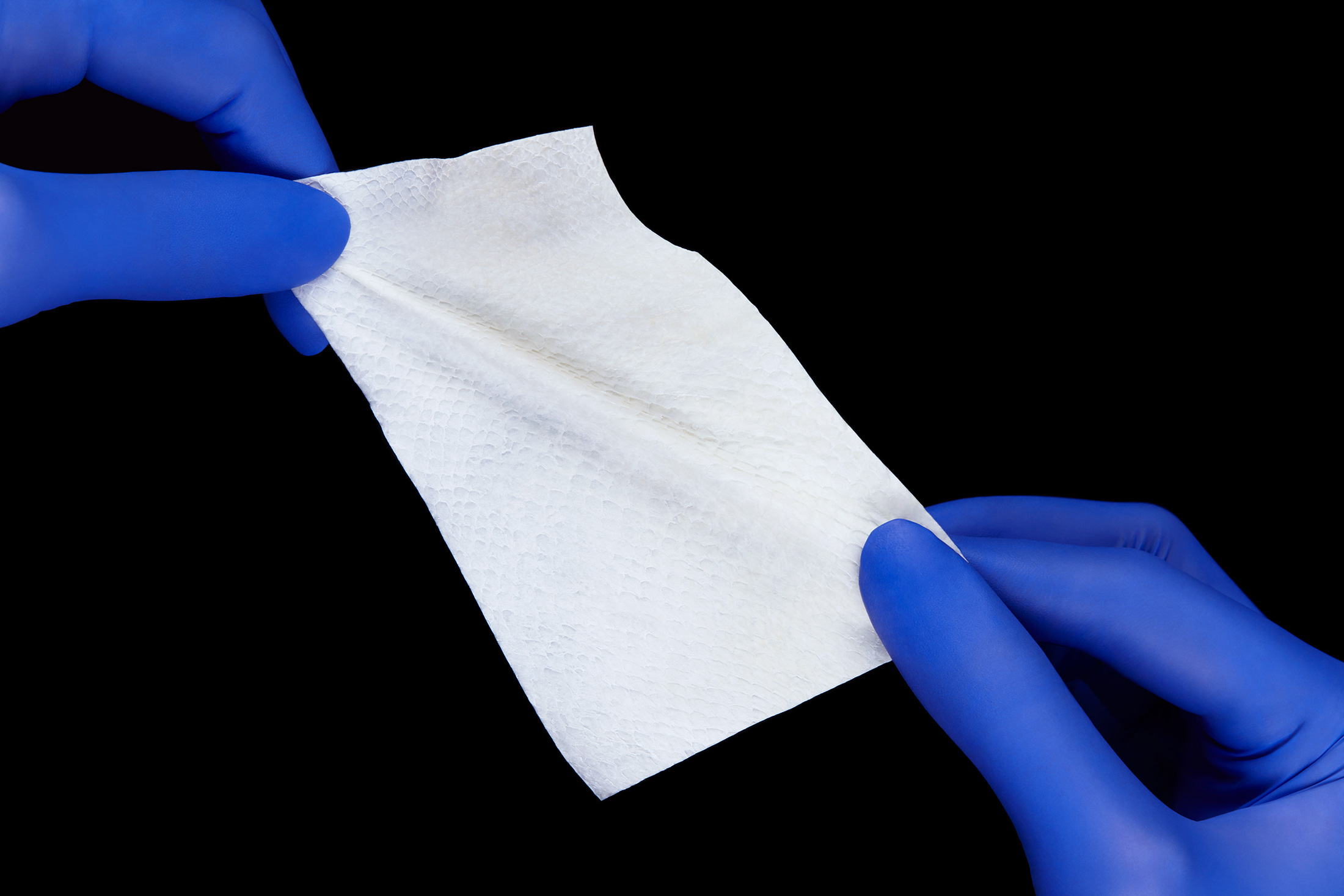
Photo by Rebecca Scheinberg
Use In The US Army
Kerecis are having huge growth, with Doctors working on diabetic patients and also the significant investment from the US Military. On the battle field, these fish skin grafts can be applied immediately to a burn wound to serve as a cover and protect the wound, reducing pain and is an antimicrobial.
Icelandic Fish
The fish in the waters surrounding Iceland have given a lot of sustenance and wealth to the Icelanders. Fish skins were once a byproduct, fed to farm animals, but they are now considered to be the most valuable part of the fish, with Kerecis products costing up to a thousand dollars. At that point, Sigurjonsson says, “one gram of fish skin is worth more than a gram of gold.”
CarbFix, Icelands Power Plants Are Turning CO2 into Stone
Icelands Power Plants are turning C02 into Stone
Read about how our scientist are developing this groundbreaking innovation
100% of Iceland’s electricity needs are generated from renewable sources, including geothermal energy. The landscape under Icelands crust is powering geothermal plants all over the country.
While other power stations, wether using Nuclear, coal or gas, would need fuel to heat up the water to produce steam, in Iceland they can take the steam directly from the ground. Geothermal activity underground here in Iceland is being used on a larger scale as it has the capacity to supply all of the countries domestic electricity. By adding geothermal to the already advanced hydro capacity, Iceland has become world leaders in renewable energy.
With the aim of cutting emissions even further, a unique carbon capture system called CarbFix is being pioneered at the Hellsheidi geothermal power plant in western Iceland.
How Does A Geothermal Plant Work?
In short, a geothermal plant drills a hole into the ground at a depth of around 2-3 kilometres, where the steam is over pressurised so it comes by its own pressure through the production wells. The power plant can then collect the steam at the surface and there they produce power.
The geothermal plants here in Icelands only use a very small amount of the heat generated in the earth everyday so amazingly, there is enough heat in the earths crust for millions of years to come.
How To Turning CO2 Into Stone?
Carbon dioxide emissions are captured, mixed with water and re-injected back into the ground. Through this process, the CO2 is transformed into a mineral called Calcite. The process takes just six months. This solid form of CO2 storage is seen as one of the most effective ways of preventing the gas from entering the atmosphere.
Iceland To Work With The UK
The potential of this heat and steam is so big that plans to help supply other countries, such as the UK, with geothermal energy from Iceland have been discussed.
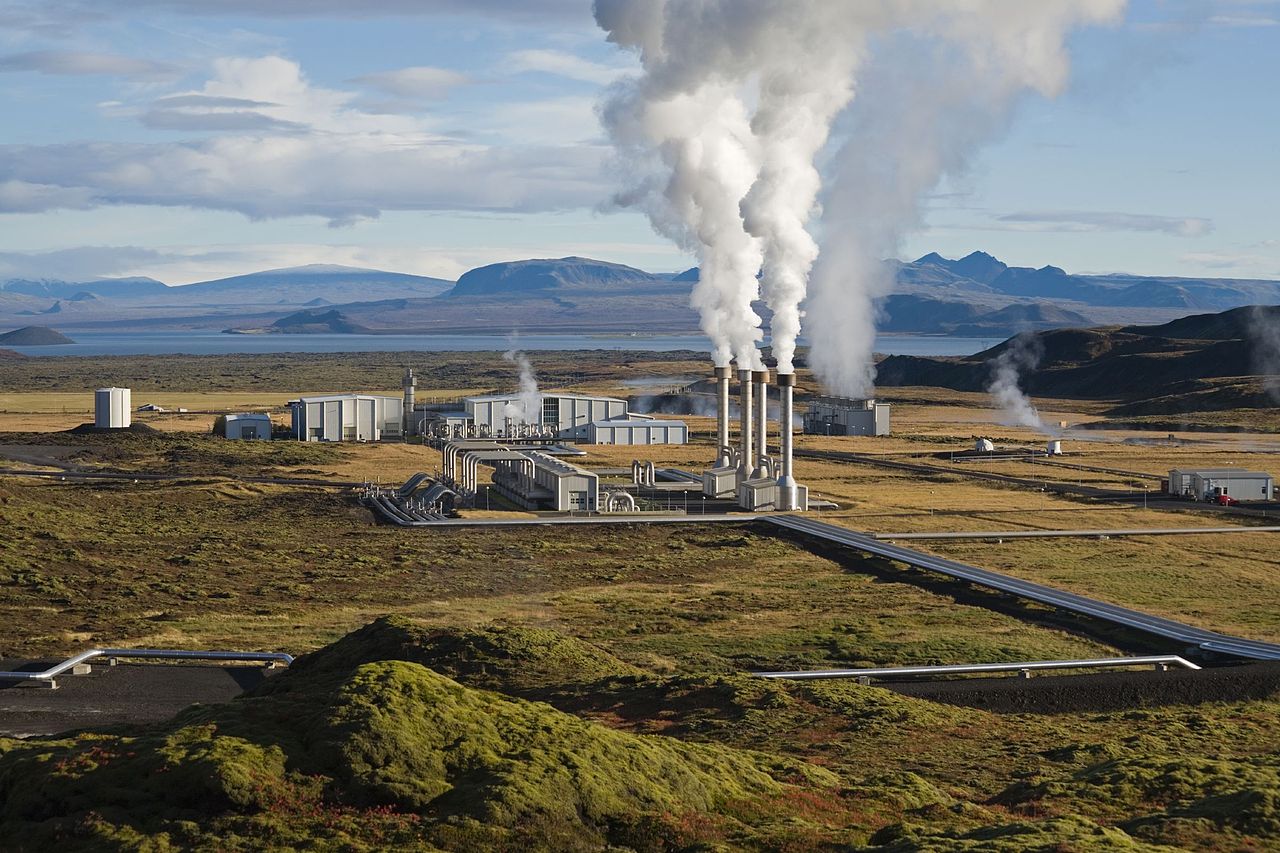
Photo by MindsGrid
The Downsides Of The Process
It might be fully renewable but there is a downside. In the process of accessing the steam, naturally occurring gases like carbon dioxide and hydrogen sulphide are also brought to the surface. The emissions are absolutely minimal when compared to the more conventional coal or gas power station however there are still some emissions to deal with.
What Is CarbFix And How Does It Work?
CarbFix is a new aspect in the development of geothermal technology where any pollutants emitted from the power plant are captured and sealed underground in the form of rock.
“We want to do our part in trying to solve this problem of the increased concentration of CO2 in the atmosphere,” says Ingvi Gunnarsson, a geochemist at CarbFix.
Iceland is doing their part in trying to solve the increased concentration of CO2 in the atmosphere with CarbFix, a new project which aims to capture the CO2 from the power plant and re-inject it back into the ground.
The Re-injection Labs
The gas immersions are transported from the main energy plant via pipes to geometric pods where they are re-injected into the ground. Once they have produced electricity, the Engineers at the plant needed to find a solution to dispose of the left over water and gas, which would be released into the atmosphere and contribute to climate change.
“What comes from the power plant once we’ve produced electricity is hot water and gas. We need to dispose of that somehow. If we would not be capturing it, it would be released into the atmosphere.”
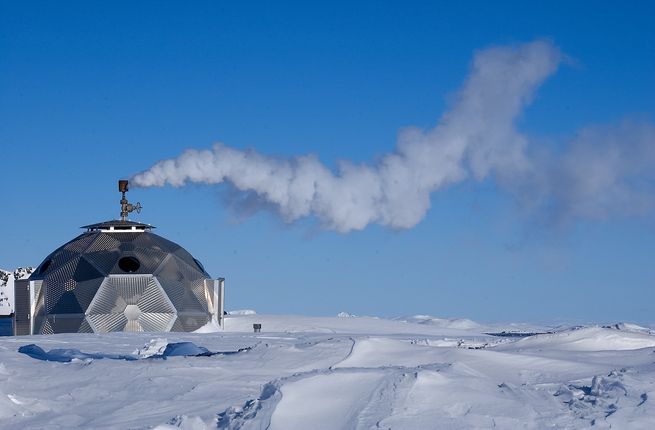
Photo by Teratornis
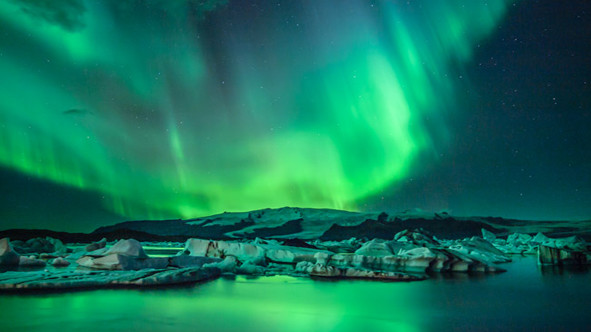


Turning Air Pollution Into Rock
Re-injecting this waste water and gas into the ground enables the carbon dioxide and hydrogen sulphite to permeate the volcanic basaltic rock and transforms it into stone. Water flows through the rock, fixing the CO2. The build up of this new rock is full of cavities, these pores are filled up with carbon minerals.
The CarbFix project replicates the natural process of weathering but instead of taking hundreds or thousands of years to turn into stone, CarbFix achieves it in just six months.
Testing The Theory, Proving It Works
To test this, Engineers sample the gases which they condense into liquid. It is a vital part in the project to demonstrate that the CO2 is being mineralised in the ground. The liquid can then be taken to a lab back in Reykjavik to be analysed for its CO2 and H2S levels. If the re-injected gases have successfully turned into stone then the sample should only contain the naturally occurring background levels of carbon dioxide and hydrogen sulphide.
What the Engineers hope to see when testing the liquid is that the CO2 levels in the steam do not raise above the background levels. When the levels are about the same as the natural occurring levels, the gases have turned to stone. This is a great approach to lower gas emissions.
Future Potential For The Project
This new process is not necessarily locked to just geothermal energy. Engineers report that if you have a relatively pure stream of CO2, which you can capture and dissolve in water, then you can in theory take that water and re-inject it back into the ground, as long as there is favourable rock composition in the area. Approximately 5% of the continents on earth are basalt, and the ocean, so more countries, companies and industries should be working this way. The potential is there to help our atmosphere and reduce climate change too.
Optical Illusion Crossing in Iceland
Optical Illusion Crossing in Iceland
Text by Sonia Nicolson
Traffic accidents in Iceland
According to the Icelandic Transport Authority (ICETRA), there were fewer fatal and serious traffic accidents across Iceland in the first ten months of 2017 than during the same period in recent years. There was a 21% decrease in serious injuries or fatalities caused by traffic accidents in Iceland between 2016 and 2017. 157 serious injuries or fatalities in the first ten months of 2017, and a significantly higher 204 within the same period of 2016.
Welcome Developments
ICETRA Public Relations Manager, Þórhildur Elínardóttir says the decrease is a welcome development and a result of changes that began in 2013. The main improvements have been in the education of young drivers with a more comprehensive training program and prevention efforts helping new drivers drive safely and be more aware of potential dangers.
Despite the rise in tourist numbers, accidents involving foreign drivers has reduced. However, accidents involving cyclists have increased and was estimated at 150 accident in 2017. With new efforts to improve driving education, awareness of potential hazards and other methods to prevent accidents, Iceland is taking to new projects to curb their fatal and serious traffic accident numbers.
Street Art Ísafjörður
Ísafjörður, the small fishing town in Icelands Westfjords, is the latest destination to introduce an ingenious way to slow drivers down when approaching a pedestrian crossing. This 3D artwork creates a clever floating zebra crossing which is painted on the road and gives the illusion that the white stripes are floating above the ground and obstructing the road.

Photo by MotoringSearch
Controlling Speed
The town of Ísafjörður has the standard speed limit of 30 kmh (18.6 mph) set but residents felt this was still simply too fast. The streets are narrow in this small village and residents wanted to find a way to slow motorists down further. The local council met to discuss ideas. Ralf Trylla, the Icelandic Environmental Commissioner was inspired when he came across a similar optical illusion drawn in New Delhi, India.
Painted Optical Illusion Crosswalk
This street painting project was led by Gautur Ívar Halldórsson, the manager of Vegmálun GÍH, a road painting company which created the crosswalk located in Ísafjörður in northwest Iceland.
Self taught, Gautur Ívar and Ralf Trylla practiced their 3D painting skills whilst waiting the few weeks it took for all necessary permits from the Transport Authority and Police to come through so work could start. From above, the white lines look like columns but as you approach them at street level you see the optical illusion come to life and they appear to be hovering.
Drivers and Pedestrians
This creative design gives the impression that the pedestrians crossing the road are walking on air. The idea is that drivers approaching the crossing will see the 3D artwork and think it looks like there is an obstacle in the road, and will therefore slow down. The aim is to make drivers lower their speed to reduce the risk of accidents in this pedestrian area.
The Inspiration
Crossing like this one are popping up across the globe in India, South Africa, Kyrgyzstan and China, but this form of street art is not the only unusual method being used to slow down traffic for pedestrian crossings. In Russia, road safety experts used a very unsubtle method of employing topless women to hold speed limit signs in an aim to get drivers to slow down – perhaps not the best method to try here in Iceland.
In the UK there is discussion of scrapping speed bumps as part of the government’s dramatic plans to curb pollution. It emerged that these publicly hated humps are not only stressful but bad for the environment as slowing down to cross them actually causes a higher level of nitrogen dioxide and so pollutes the atmosphere.
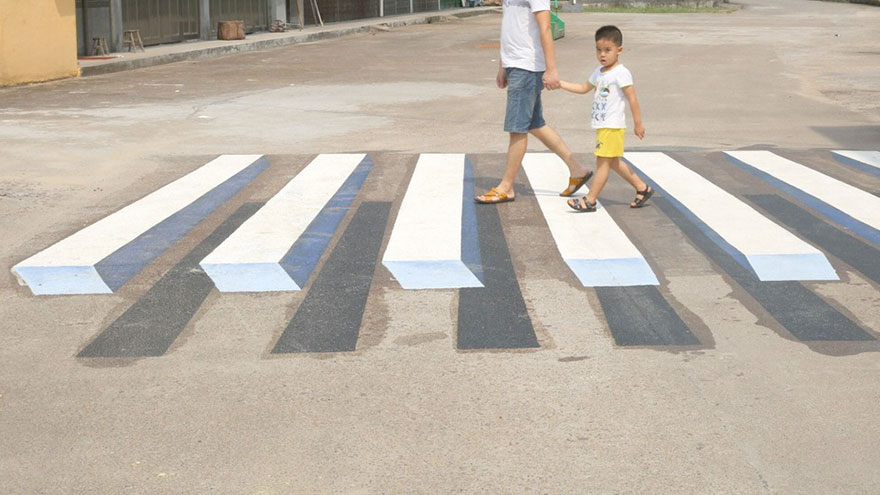
Photo by BoredPanda
Delhi’s First 3D Zebra Crossing
New Delhi Municipal Council’s (NDMC) newly installed crossing, painted at central Delhi’s Rajaji Marg, has helped reduce the average speed on this section of road down to 30 km per hour. “The new 3D zebra crossing has become a sight of amusement for commuters. Cars inevitably slow down and there is also excitement among pedestrians to use it,” said a senior traffic official.
This black and yellow crossing, painted as a trial project, had the aim to help make the city roads safer. New Delhi officials are now discussing more 3D pedestrian crossings to be created across the city to help make roads safer. “We did not know how people would respond to such 3D pedestrian ways, but the response is overwhelming. Our aim is to make the NDMC area a people-friendly space and such measures will ensure safety for pedestrians as well as drivers,” said Naresh Kumar, NDMC chairperson.
The average speed on this section of road is 50km/hr however the wide and well maintained roads make for the ideal place for drivers to speed through. Traffic officials have now monitored the crossing and an average speed of 30km/hr was recorded. “If you are driving, from a distance the crossing looks like the road has been dug up or is elevated, this automatically makes the driver slow down. During the day you will see pedestrians hopping through the painted blocks,” the official said.
It took Yogesh Saini, founder of Delhi Street Art, 3 days to paint the crossing in collaborated with NDMC. He said, “The entire crossing was painted in the morning during rush hour.”
A senior NDMC official said that five other locations have been identified where the crossing will come up in the coming months. “Instead of repainting the zebra crossings in black and white, we will replicate the 3D design,” the official.
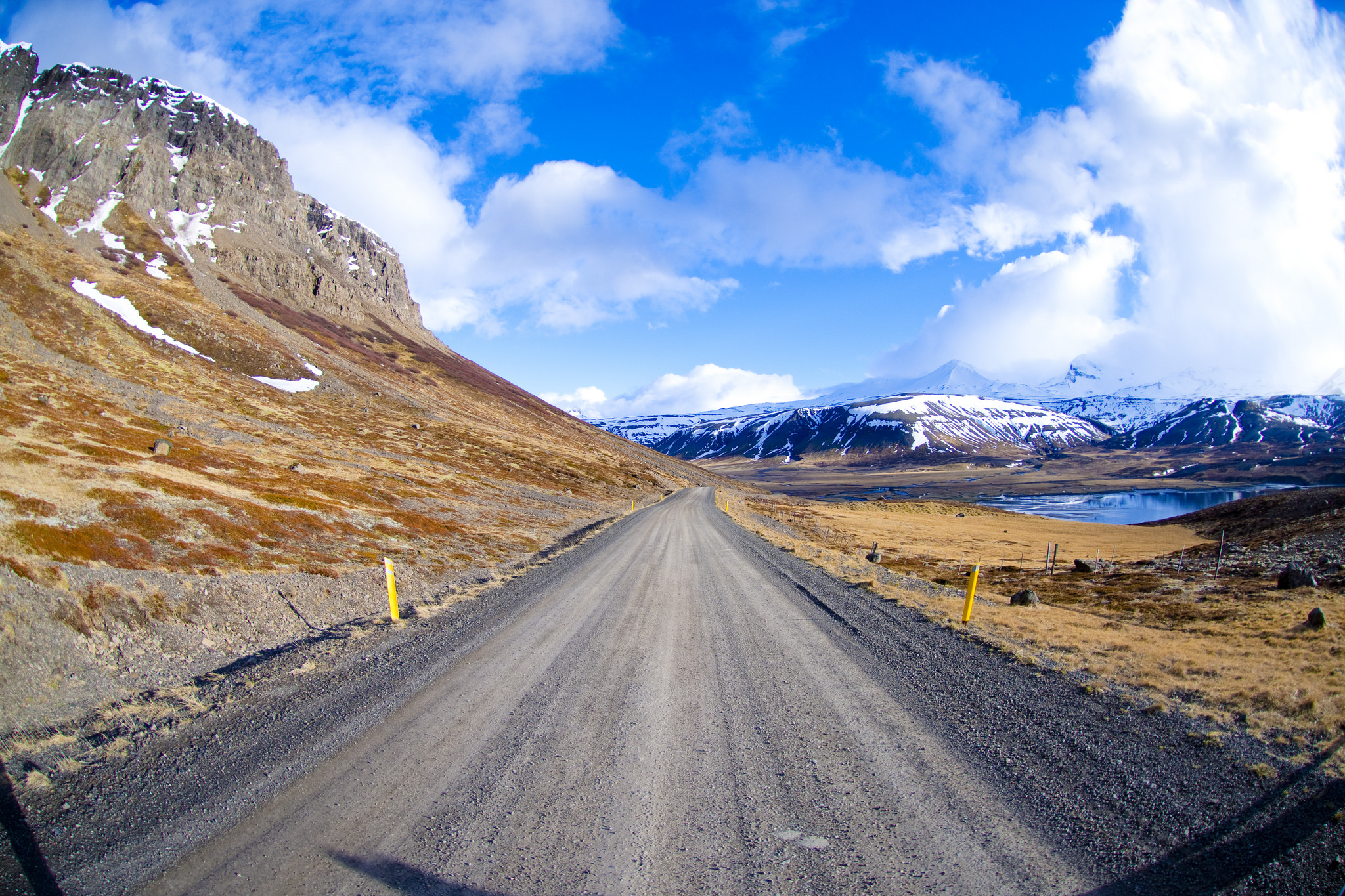
Photo by Conor Lawless
Traffic on Ring Road One
Traffic on Icelands Ring Road is usually at its heaviest in July but it reached a record high last year, said the Icelandic Road and Coastal Administration (IRCA), with a record of 108,000 vehicles passing the 16 IRCA counters on the Ring Road daily. This number has increased over the past decade from 82,000 vehicles, meaning an increase of around 30% since 2007.
However, the increase in traffic between years is slowing down with an increased of only 7.3% in July 2017 compared to the pervious year. The greatest increase in traffic is in the north of Iceland with around 12% more visiters, and the South Coast is experiencing a growth of around 3.8%. Indications are that traffic between 2016 and 2017 increased 9% overall, which is a smaller increase than in the previous year.
The Future for Roads in Iceland
The local council has not decided if it will implement more 3D crosswalks like this one in Ísafjörður, but if the experiment proves successful more may follow.

